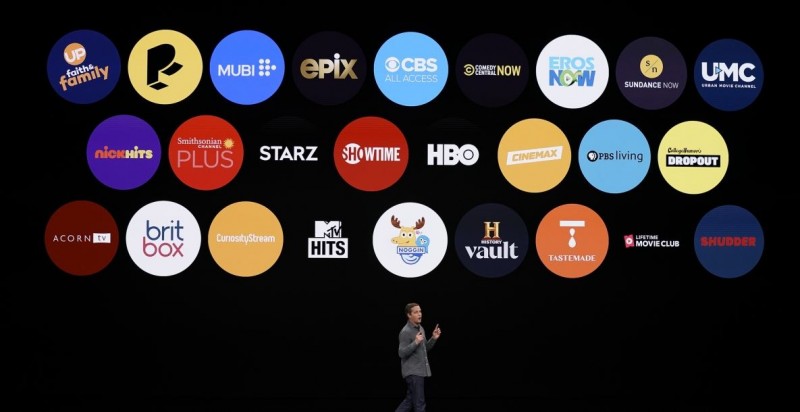
Introduction
The entertainment landscape has undergone a significant transformation with the rise of streaming services. Traditional television and film industry, which once held a monopoly over content distribution, are now facing unprecedented challenges. This article explores the profound impact that streaming services have had on the traditional television and film industry, ranging from changes in consumer behavior to the evolving business models.
Changing Consumer Behavior
The advent of streaming services has revolutionized the way people consume television shows and films. Gone are the days when viewers had to adhere to strict schedules dictated by traditional networks. Streaming platforms offer convenience and flexibility, allowing users to access their favorite content on-demand. The ability to binge-watch entire seasons or discover new shows has become a norm, leading to a shift in consumer behavior.
Disruption of Traditional Distribution Channels
Traditional distribution channels, such as cable and satellite television, have faced significant disruption due to streaming services. With a wide variety of content available at a fraction of the cost, consumers are cutting the cord and opting for streaming platforms. This disruption has challenged the dominance of cable and satellite providers, forcing them to reevaluate their business strategies.
Original Content and Creative Freedom
Streaming services have provided a breeding ground for original content, giving filmmakers and creators more creative freedom than ever before. Platforms like Netflix, Amazon Prime Video, and Hulu are investing heavily in producing high-quality original series and films. This has resulted in a surge of fresh and innovative content that caters to diverse audiences, challenging the traditional television and film industry to keep up with the changing trends.
Monetization and Revenue Streams
The monetization models of streaming services differ from the traditional television and film industry. Instead of relying solely on advertising revenue, streaming platforms primarily generate revenue through subscription fees. This shift has allowed for a more direct relationship between content creators and consumers. Additionally, streaming services have introduced new opportunities for monetization, such as licensing content to international markets and partnering with brands for product placements.
Competition and Market Fragmentation
The rise of streaming services has intensified competition within the entertainment industry. With numerous platforms vying for subscribers, the market has become fragmented. This fragmentation has led to an increase in the quality and variety of content available to consumers. However, it has also created challenges for traditional networks, which now face the task of retaining their audience in an increasingly competitive landscape.
Challenges Faced by Traditional Networks
Traditional networks are grappling with the challenges posed by streaming services. They are compelled to adapt to changing viewer preferences and find innovative ways to stay relevant. Many networks have launched their own streaming platforms to compete with the industry giants. However, they face the challenge of balancing the needs of their traditional television audience with the demands of the streaming market.
The Power of Data Analytics
One of the significant advantages of streaming services is the wealth of data they collect about user behavior. Through advanced analytics, platforms can gain insights into viewer preferences, allowing them to personalize recommendations and improve content offerings. This data-driven approach gives streaming services a competitive edge in understanding and catering to their audience, enabling them to create targeted and engaging content.
Global Reach and Localization
Streaming services have expanded the reach of television shows and films to a global audience. Unlike traditional distribution models, which rely on localized networks and syndication deals, streaming platforms can distribute content worldwide with ease. This global reach has facilitated the exposure of diverse stories and cultures, breaking down geographical barriers and fostering a more inclusive entertainment industry.
The Future of Television and Film Industry
The future of the television and film industry lies in a hybrid model, where streaming services and traditional networks coexist. While streaming platforms have disrupted the industry, there is still value in traditional broadcasting, especially for live events and news coverage. The key to survival for traditional networks lies in embracing digital technologies and adapting to the changing landscape, while streaming services continue to innovate and cater to evolving viewer preferences.
Conclusion
Streaming services have undeniably made a profound impact on the traditional television and film industry. They have changed consumer behavior, disrupted distribution channels, empowered content creators, and introduced new monetization models. While traditional networks face challenges, they also have the opportunity to reinvent themselves and find their place in the evolving entertainment landscape. The future will be defined by a symbiotic relationship between streaming services and traditional networks, offering viewers a diverse range of content options.
Adani Enterprises acquires 30% stake in Trainman, online train ticket booking platform.
Remembering Bollywood Superstar Sanjeev Kumar on His 83rd Birth Anniversary
Exploring the World of Augmented Reality: Blending the Physical and Digital Realms